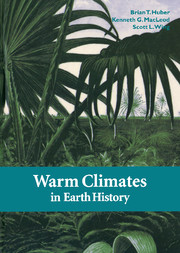Book contents
- Frontmatter
- Contents
- List of contributors
- Preface
- Part 1 Approaches to the study of paleoclimates
- Part II Case studies: latest Paleocene–early Eocene
- Part III Case studies: Mesozoic
- Part IV Case studies: Paleozoic
- Part V Overview: climate across tectonic timescales
- 14 Carbon dioxide and Phanerozoic climate
- Index
- Plate section
14 - Carbon dioxide and Phanerozoic climate
from Part V - Overview: climate across tectonic timescales
Published online by Cambridge University Press: 06 July 2010
- Frontmatter
- Contents
- List of contributors
- Preface
- Part 1 Approaches to the study of paleoclimates
- Part II Case studies: latest Paleocene–early Eocene
- Part III Case studies: Mesozoic
- Part IV Case studies: Paleozoic
- Part V Overview: climate across tectonic timescales
- 14 Carbon dioxide and Phanerozoic climate
- Index
- Plate section
Summary
ABSTRACT
Much has been written about the importance of past carbon dioxide fluctuations as a cause of Phanerozoic climate change. In this update I summarize the present level of data/CO2 geochemical model agreement for the Phanerozoic. Although there is a striking first-order agreement between simulated changes in CO2, proxy estimates of CO2, and evidence for global climate change, I argue that additional factors need to be considered in order to derive a general theory for Phanerozoic climates that is in quantitative agreement with climate models, and that these factors fall into two levels of importance. The most important first-order considerations for global temperature involve land–sea distribution and solar luminosity changes. Changes in ocean heat transport, orography, and vegetation may be necessary for obtaining better agreement between spatial patterns of climate change and models, but they may have a second-order effect on global temperature except in some cases of high latitude vegetation cover and the effect of orography on CO2 levels. A more complete explanation for climate on tectonic time scales has to incorporate all these factors in a parsimonious manner in order to avoid a proliferation of ad hoc explanations for past climate change. Enhanced statistical comparisons between models and data are essential for more stringent testing of model predictions.
INTRODUCTION
Since the groundbreaking work of Eric Barron, Robert Berner and colleagues in the early 1980s much has been learned about causes of climate change on tectonic time scales.
- Type
- Chapter
- Information
- Warm Climates in Earth History , pp. 425 - 444Publisher: Cambridge University PressPrint publication year: 1999
- 2
- Cited by



